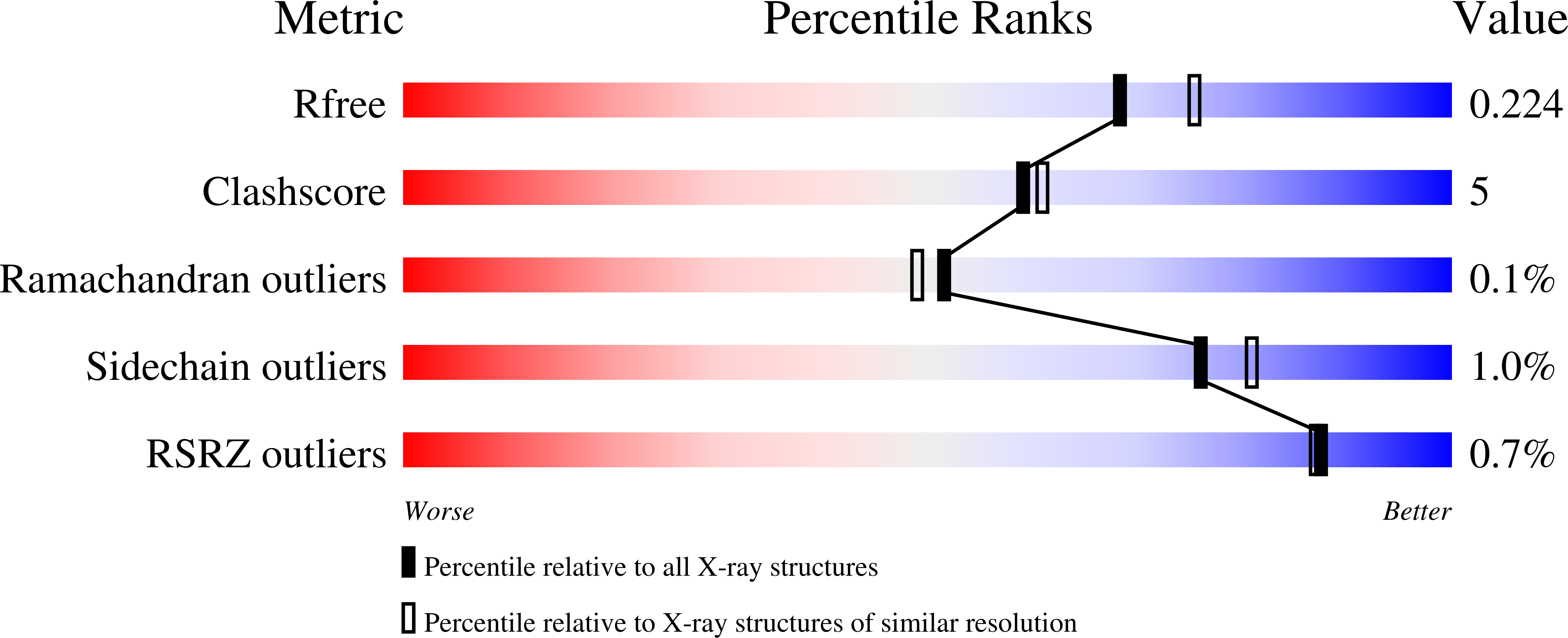Competitive Recruitment of the Periplasmic Translocation Portal Tolb by a Natively Disordered Domain of Colicin E9
Loftus, S.R., Walker, D., Mate, M.J., Bonsor, D.A., James, R., Moore, G.R., Kleanthous, C.(2006) Proc Natl Acad Sci U S A 103: 12353
- PubMed: 16894158
- DOI: https://doi.org/10.1073/pnas.0603433103
- Primary Citation of Related Structures:
2IVZ - PubMed Abstract:
The natively disordered N-terminal 83-aa translocation (T) domain of E group nuclease colicins recruits OmpF to a colicin-receptor complex in the outer membrane (OM) as well as TolB in the periplasm of Escherichia coli, the latter triggering translocation of the toxin across the OM. We have identified the 16-residue TolB binding epitope in the natively disordered T-domain of the nuclease colicin E9 (ColE9) and solved the crystal structure of the complex. ColE9 folds into a distorted hairpin within a canyon of the six-bladed beta-propeller of TolB, using two tryptophans to bolt the toxin to the canyon floor and numerous intramolecular hydrogen bonds to stabilize the bound conformation. This mode of binding enables colicin side chains to hydrogen-bond TolB residues in and around the channel that runs through the beta-propeller and that constitutes the binding site of peptidoglycan-associated lipoprotein (Pal). Pal is a globular binding partner of TolB, and their association is known to be important for OM integrity. The structure is therefore consistent with translocation models wherein the colicin disrupts the TolB-Pal complex causing local instability of the OM as a prelude to toxin import. Intriguingly, Ca(2+) ions, which bind within the beta-propeller channel and switch the surface electrostatics from negative to positive, are needed for the negatively charged T-domain to bind TolB with an affinity equivalent to that of Pal and competitively displace it. Our study demonstrates that natively disordered proteins can compete with globular proteins for binding to folded scaffolds but that this can require cofactors such as metal ions to offset unfavorable interactions.
Organizational Affiliation:
Department of Biology (Area 10), University of York, York YO10 5YW, United Kingdom.
















